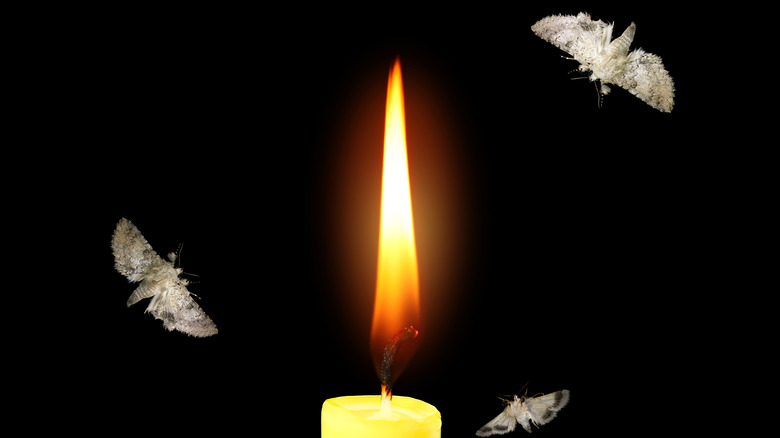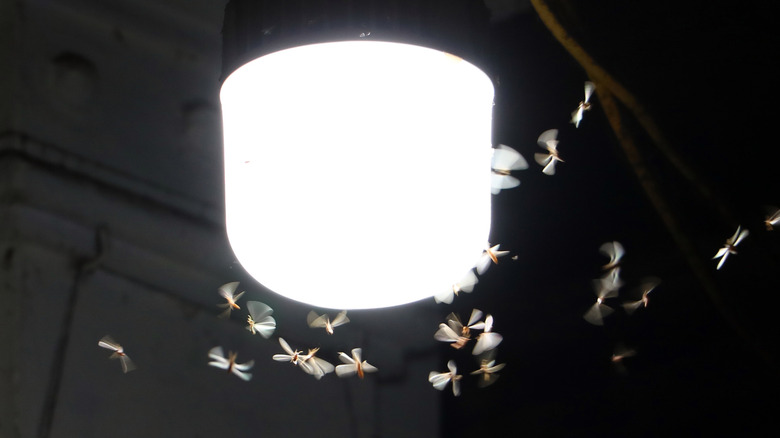Are Moths Really Drawn To Flames?
The natural world contains some pretty eccentric and peculiar creatures. As human beings, we often find ourselves observing fellow inhabitants of this planet with both a sense of confusion and amazement. It's true — there's no shortage of strangeness contained in land, sea, or air. Case in point, have you ever watched a moth willingly plummet to its death while diving into a candle flame and wondered what the suicidal predisposition is all about? It's a natural marvel that's as tragic as it is perplexing, but scientists have a number of theories about the bizarre phenomenon that might help "shed some light" on it for you.
According to National Geographic, many scientists throughout the years have subscribed to the opinion that moths incinerate themselves in the gullet of a flame after mistaking it for the moon, which they (allegedly) use as a navigational tool in a process called traverse orientation. With the advent of different kinds of artificial light, via human innovation, the winged creatures have become fatally confounded by the deceptive luminous landscape. Jeff Smith, curator of the moth collection at the Bohart Museum of Entomology, explains the process a little further: "[Transverse orientation] is sort of like us keeping the north star in a certain position so we know where we are. (via National Geographic)"
However, there's been some debate about this theory amongst experts as of late.
Other theories
Despite the widely-accepted paradigm about transverse orientation and moths' relationship with the moon, some scientists have other theories on the matter. The presiding contrarian argument centers around the very real possibility that moths don't use the moon for navigation at all. That's because evidence to support the moon claim is faulty: Over 50% of moths do not migrate, so a universal beacon of navigation would be virtually pointless for them. Henry Hsiao, a professor of Biomedical Engineering at the University of North Carolina, believes that the tendency to circle artificial light sources like lightbulbs and candles arises from something called a "march band." A march band is the circular area surrounding a light that produces a space beyond its border that appears darker than any other part of the sky. Naturally, it creates a sensible place for moths to hide from predators (via Mental Floss).
However, that still doesn't explain why moths are prone to crashing directly into a flame. In the 1970s, entomologists from the U.S. Department of Agriculture noted that candle flames contain some of the exact same wavelengths of light given off by female moths' luminescent pheromones, which would inevitably attract male moths seeking a mate. There's the matter of UV light, which also attracts moths, but is void of the same pheromonal offshoot emitted by candles.

